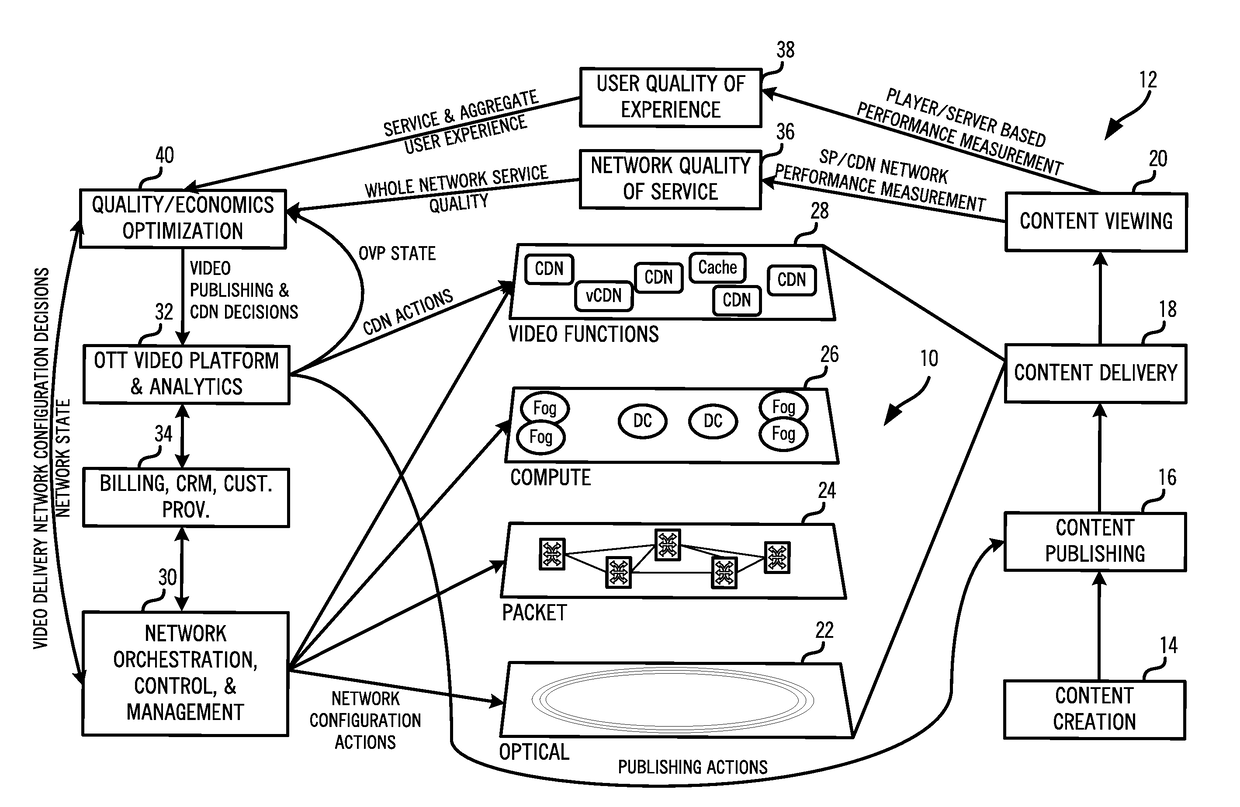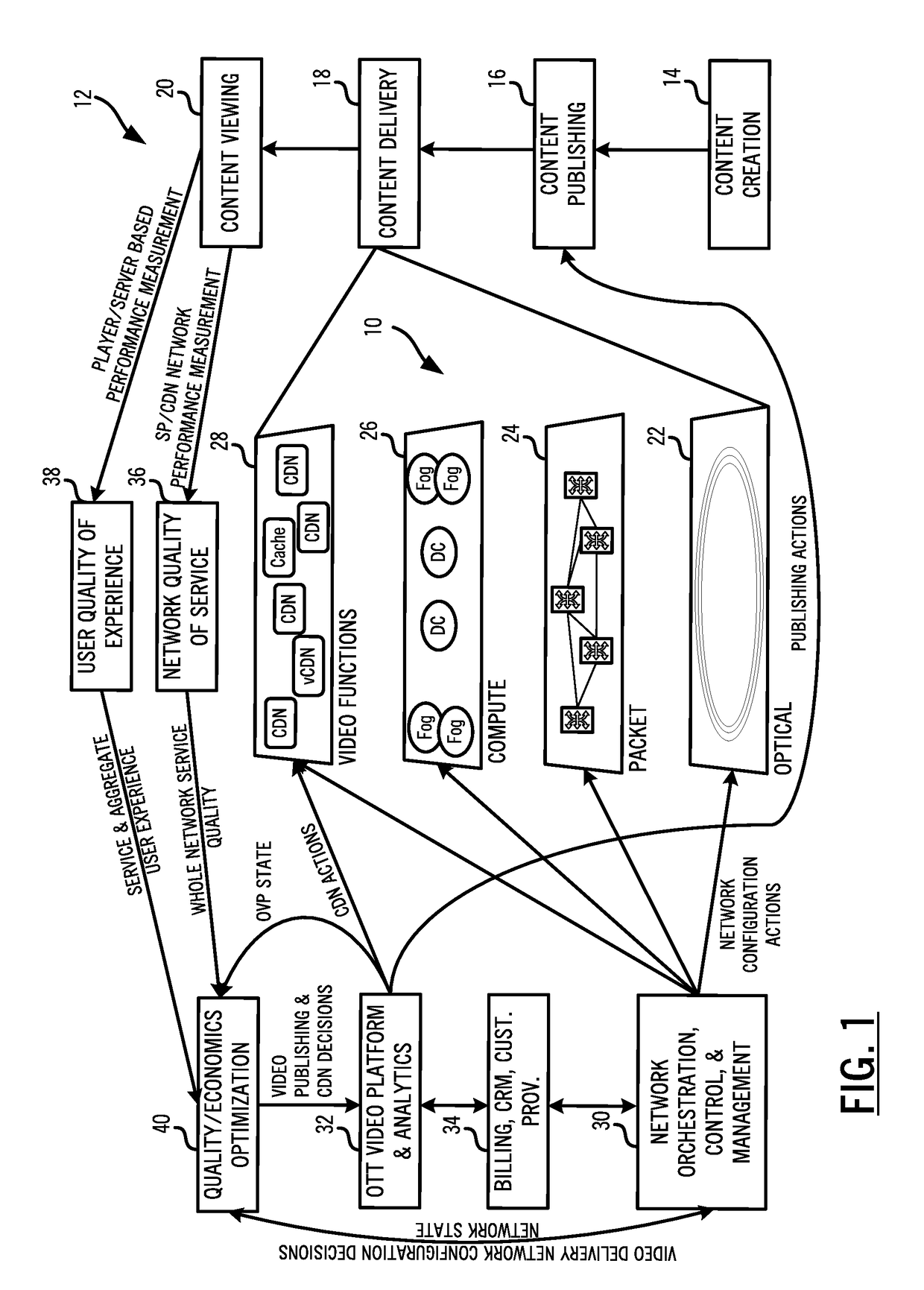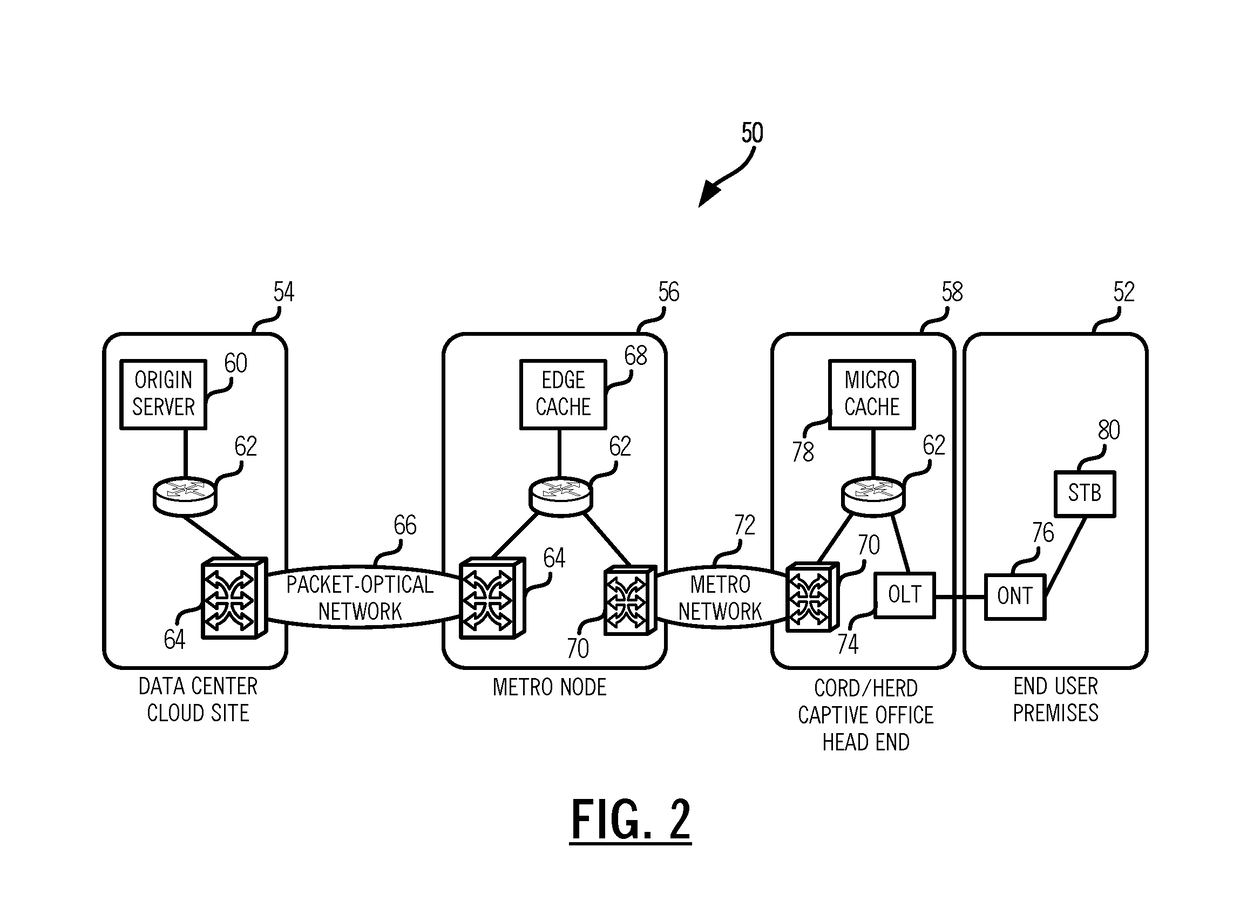Systems and methods for adaptive over-the-top content quality of experience optimization
a content quality and experience optimization technology, applied in the field of network systems and methods, can solve the problems of not being able to control, copyright, or other redistribution of content, higher cost and lower performance of ott content delivery, and ultimately more expensive, so as to improve qoe inputs and increase bandwidth
- Summary
- Abstract
- Description
- Claims
- Application Information
AI Technical Summary
Benefits of technology
Problems solved by technology
Method used
Image
Examples
example network
[0031]Referring to FIG. 2, in an exemplary embodiment, a network diagram illustrates a network 50 illustrating content distribution to an end user 52. The network 50 provides additional details of the components in the network 10. Specifically, the network 50 illustrates one exemplary configuration to deliver an OTT content stream to the end user 52. Components in the network 50 can include a data center / cloud site 54, a metro node 56, a captive office / head end 58, and the end user 52. The data flow for the OTT content is from the site 54 through the metro node 56 and the head end 58 to the end user 52. The site 54 can include an origin server 60 hosting the OTT content, one or more routers / switches 62, and a network element 64. The origin server 60 provides the OTT content through the one or more routers / switches 62 to the network element 64. The one or more routers / switches 62 can provide higher layer connectivity (L2 and above) and the network element 64 can provide L0, L1, L2, a...
optimization examples
[0052]Again, the optimization is performed on a single OTT content stream or a group of OTT content streams. The following illustrate some non-limiting examples of the optimization performed by the optimization platform 40 and / or the OTT content optimization method 100. For example, where the QOE data identifies n+ (where n is defined in policy) users impacting QOE issues, and all of the n+ users are sourced from caches located in the same location running at higher than normal CPU levels, the optimization platform 40 can spin up new instances of caches in that location along with the appropriate changes or instantiations of load balancers, firewalls, and routing / switching NFV functions to spread the high load amongst a greater number of caches.
[0053]Also, where QOE measurements identify n+ (where n is defined in policy) flows with user impacting issues, the optimization platform 40 can use the detailed flow information to map out the path that flow would traverse over the network t...
PUM
 Login to View More
Login to View More Abstract
Description
Claims
Application Information
 Login to View More
Login to View More - R&D
- Intellectual Property
- Life Sciences
- Materials
- Tech Scout
- Unparalleled Data Quality
- Higher Quality Content
- 60% Fewer Hallucinations
Browse by: Latest US Patents, China's latest patents, Technical Efficacy Thesaurus, Application Domain, Technology Topic, Popular Technical Reports.
© 2025 PatSnap. All rights reserved.Legal|Privacy policy|Modern Slavery Act Transparency Statement|Sitemap|About US| Contact US: help@patsnap.com



